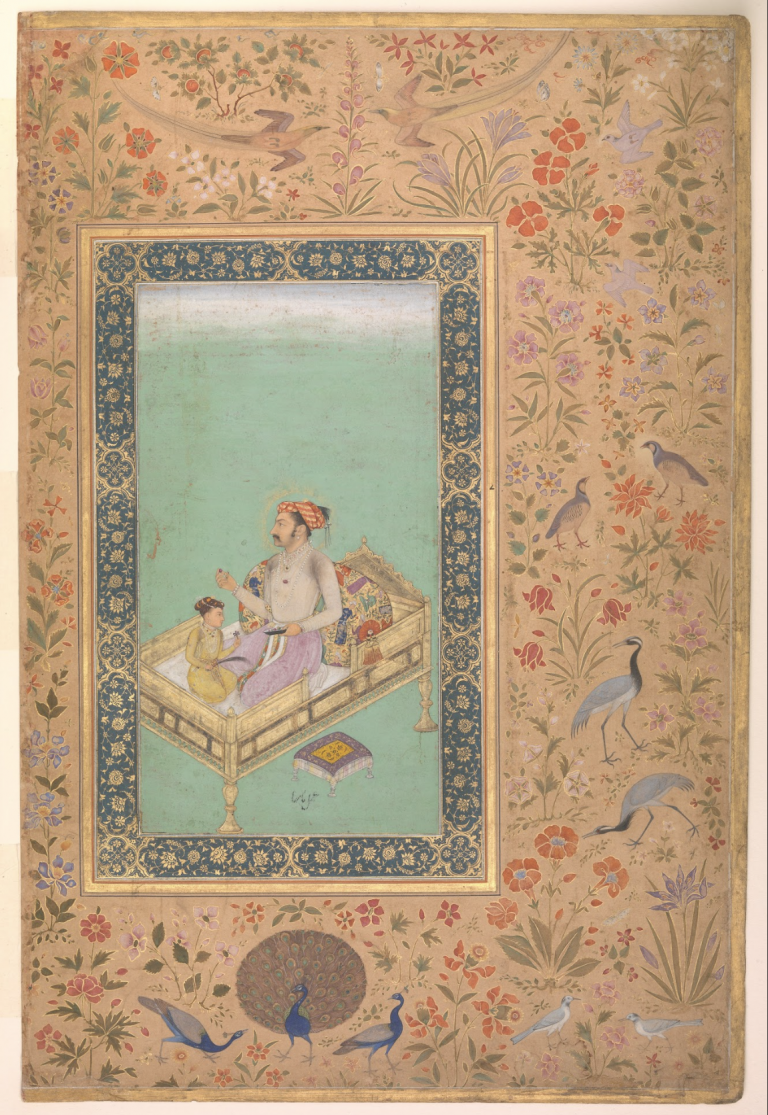
This moment recognizably is time when a pelt of enthusiasm and commitment to create a self reliant as well as a sustainable economic model for the arts, surfaces in extended bounds within the realm of artistic praxis. In span of a decade in India, a desire had germinated persistently to question the existing structures of creative and intellectual practice while trying to build new institutional models. The reason may be discerned in the moment of rupture, when a blurring of distinctions between disciplines was witnessed and an open-ended, economically liberated and post-medium, experimental practice started marking its footing at informal spaces that functioned outside the commercial white-cube. Most of these spaces, then and now, have asserted their existence under the purview of practicing artists, hence also being termed as artist-run spaces.
In this piece, I will outline the disposition of various alternative art spaces that exist in adjuncts of each other and are in their own distinct ways, making accessible, a physical space for supporting the production and viewing of art, that exist beyond the conventional borders.
Undoubtedly Khoj, registered as a non-profit society in 1997 was first in the country to have started functioning as an ‘alternative’ space and nurtured such art forms. Anita Dube, one of its founding members, spelled out its aims in the first Khoj catalogue: ‘Our aim was to function as an experimental art laboratory that would bring artist together from different parts of the country, from the subcontinent and from across the globe, setting up a co-operative, non- hierarchical work situation where dialogue, exchange and transfer of information, energy and skills could take place as an intensely lived experience.’1

Khoj’s interventions started through means of a workshop in Modinagar in 1997, in the outskirts of Delhi with a gathering of twenty-four mid-career artists both local and international. Further to this, the space operated in make-shift accommodates in the city with irregular donation and aids as well as working structures that included a sparse staff. It was only in 2002, that Khoj acquired a studio building with the support of Triangle Arts Trust at its present address Khirkee Village – a neighborhood situated between the influx of both the rural and the urban. Build as a two-storey building with five studios and a library cum office, it has a rugged build-up as does the structure sprawling back and forth around an internal courtyard. Within the interiors of this space, a sense of community builds up amidst artists from diverse backgrounds working in a common locate, fostering a cross-cultural and cross-genre discourse. Indeed, the communities and related spaces become the raw material for the local and global artist to act upon, evident especially in numerous residencies Khoj has through the years organized.

Khirkee-ki-Khoj: Shop Make-over Project developed as part of Khoj Community Arts Project initiative in November 2005 where eleven artists from diversified practices fleshed over the disposition of the primary residents (the shopkeepers in this case) of street where Khoj is situated. The artists explored the dynamics of this site at the Khirkee Village, negotiating their presence vis-à-vis aesthetics within quotidian spaces like a barber’s shop – the social-political-economic constructs of the things that constitute it; consumerist dreams and fetishes as part of the societal gamut; ideologies and varying cognitive processes of its residents. Temple Installation was another community art initiative by Khoj. Aastha Chauhan along with Ram Bali Chauhan on the request of the chief priest of Sai Baba Mandir in Khirkee extension made a decorative installation of bells at the temple. Apart from developing a warm camaraderie with the priest and other trust members of the temple, the artists coincidentally activated a ritual wherein the regular devotees now circumambulate the sculpture before entering the temple; while the priest interprets the sculpture made as a six feet globe like iron structure with 450 bells of various sizes welded onto it as representative of the world, and the bells strung on it spinning with the sheer force of mother earth that sustains the world. Facilitating various coordinates for interaction and multifarious imaginaries, the local peripheries even become space for exhibits, the recent example being In Context: public.art.ecology which intervened in the public sphere with a series of installations and projects at the Select Citywalk, just across the Khirkee Village. Flip-flopping from public spaces like Barakhamba Road (site for ecology residency) to local suburbs and more recently, the malls, the attempt is to reach the real diversity of the community at large.
One assuming its existence from its larger geographical locate is Periferry in Guwahati. Started by artist-husband-wife duo Mriganka Madhukaillya and Sonal Jain working as the ‘Desire Machine Collective’, the Periferry is housed as a boat or a ferry (now you know where the ferry of Periferry comes from) on river Brahmaputra with a petrol powered ‘stand alone system’ that most often is sustainably immobilized due to the high cost of energy consumption. This space works as an incubator for transforming cultural productions vis-a-vis Northeast India with other parts of South and Southeast Asia and the world. Started in Guwahati in 2007, it has grown to become a place to vent out dialogues and expressions amidst critical political, ethical and cultural issues existent in this vulnerable region. With initial opposition from the regional government and sparse funds, Periferry has been substantiating support from the uncanny corners. A recent residency Shifting Anchors: Floating Memories was held here in collaboration with Lalit Kala Akademi Regional Centre Kolkata. Sanchayan Ghosh, an artist based in Santiniketan initiated a process in December 2009 to explore the transforming relationship of the river and the city. With escalating urbanization and infrastructure, the issues of labour, economy, migration and identity have undergone metamorphosis; witnesses to this phenomena being some futile entities on the river bank – stranded ferries, jobless dhobis as well as workers of the steamers. The artist created an adda to host an interactive session on the ferry centered on existence of the people of Guwahati vis-à-vis Brahmaputra river. The artist over this period of time build over an archive of possible documentation of different ferries that lie stranded on the bank activating a strand of memories of what existed and what will, beyond this time, living possibly through visual apparatus like images.
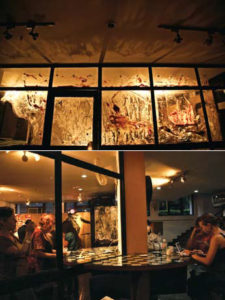
The projects become exciting as they are perceptibly part of community development process, as a means to connect artists with the community, to encourage participation in the arts and to demonstrate the relevance of the arts to every day life. Indeed the local boatmen have in this duration, garnered a sense of belonging towards the ferry and its activities, of which they become an active part. They even act out the role of guardian of the ferry. If ever there was an opportunity to return art (and thereby importance) to the locals, and reinstate recognition of that community, it is this. It is important to note that it is the process that is most significant to these spaces, which takes necessary precedence over the artistic product or outcome.
The artist run spaces indeed were intended to reject the banality of the market and provide support for a vital, alternative culture in which artist were responsible only to themselves and their own interests. Another vital off-centre set-up as an institutional critique in wake of persistent lack of appropriate spaces in a metropolis like Bangalore (which still cannot boast of many substantial/formal exhibiting venues) is 1 Shanthi Road. In fact, NGMA, Bangalore was established after more than twenty years of lobbying by the artists here. Suresh Jayaram, the founder of this space feels that a lot of radical energies are fed into the being of alternate spaces and voluntary action by a few artists helps set up the climate of self-determination necessary to form the artist organizations. Indeed for Suresh akin to the founders of such extended spaces, such experimental ménages weave trails of personal trajectories. 1 Shanthi Road is an extension of Suresh’s personal life as it is build on his ancestral property on the street whose name the space adopts. The space is run through limited funds coming through donations, collaborations like with Khoj (it, besides one other junction in Mysore is treated as segment of Khoj in the southern part of India) as well as occasional awards, the recent one being the Robert Bosch Institutional Grant received in 2009. The space’s architect Meeta Jain also won an award for designing this innovative and multi-dimensional space in 2008. The founder of the Triangle Arts Trust, Robert Loder, once opinioned on the proposition of sustenance of these spaces scribing the mantra of ‘keeping the heads low’. With limited funds and an informal institutional back, these spaces become fountainhead for much buzz and activities, resting on the will to produce art that is speculative, transient and open to change. The Studio/Gallery at 1 Shanthi Road provides space for slide lectures, small conferences, installations, performances, screenings and informal gatherings for artists and the alternative art community. Interestingly, these places foster a sense of community wherein 1. Shanti road hosts a daily open kitchen providing for a modest meal to anybody who wants to savour it.
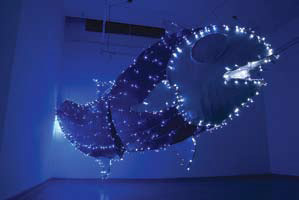
If the alternative space movement represents an avant-garde, it has been an institutionalized avant-garde. The individuals who founded and ran these organizations were soon transformed from artists into artist/ administrators. The artists who set up spaces like Periferry and 1 Shanthi Road exemplify this trend. Besides them, a skeletal staff, the number not going up from four to five help operate these spaces.
Indeed much of the experimental activity in Bengaluru revolves around ciphering immediate transitions in the city, modernizing with a historical baggage. It has become an active centre for new media artists to explore their innovative vocabulary. Indeed, there is a significant group of talented local artists who are concerned with responding to pressing social concerns. Other active artist run spaces being Bar 1 (Bengaluru Artists’ Residency 1) and BAC (Bangalore Artist’s Centre). Operational back-up of these places includes a broad range of intellectual and cultural producers whose livelihood derives primarily from their ability to create and regulate a set of analytic or symbolic discourses.
To act as a supportive intellectual and creative catalyst, Sarai was set up as a programme of CSDS – The Centre for the Study of Developing Societies a decade back by the three members of the Raqs Media Collective, a Delhi-based group of media practitioners, documentarists, artists and writers. The Sarai programme at CSDS quotes a history of exchange and intersecting journeys to function, variously, as a research centre focusing on urban space, media practices, the politics of information, contemporary culture and the knowledge commons as well as a publishing and translation programme, cafe, modest screening space and archive, a venue for workshops, meetings and conferences, software laboratory and as an atelier for contemporary and digital and art design. Sarai is striking for its networked structure and the innovative and diverse content that it produces. Sarai also functions, through its annual programme of independent and associate fellowships and student stipends as a support structure for many different kinds of independent research and creative activities all over India. Sarai uses its space for short-term exhibitions, which are essentially an out product of its various residencies constituent of practitioners from different backgrounds.
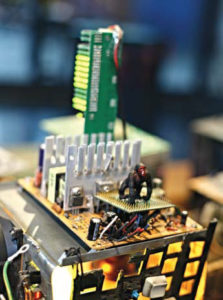
The Sarai programmes shares a close relationship to the city, evidently to the ongoing transformation of the urban fabric of Delhi, the everyday realities of media and information processes in the city. The recent one is the series of associate fellowships it has provided to multi-nodal practitioners to explore the context of ‘City as Studio’. ‘Cybermohalla’ literally meaning Cyber-Neighbourhood refers to a network of media laboratories established by Sarai in working class neighbourhoods of Delhi (in collaboration with Ankur, an NGO active in the field of alternative pedagogy). The young practitioners who are associated with the Cybermohalla process write, conduct oral history investigations, document neighbourhoods and lives with digital image and sound technologies and interpret the urban condition with imagination, humour and a sharp critical edge. The collaboration between people working at Sarai, Ankur and ensembles of young writers, artists and thinkers associated with the Cybermohalla processes have led to the production of an impressive array of books, exhibitions, installations and sound works.
During workshops, initiatives and residencies, artists focus on work in progress rather than the finished product. The activities are non-prescriptive and process-based, emphasizing experimentation and fresh thinking. Sarai’s as well as activities in such informal sectors operate in rotating cycles, as many artists move in and out to engage with the space with subjective interests and perspectives. This happens as proposals pruned to the interests and capacities, while the space gets fed in the system through democratic and fair means, henceforth watering grounds for some new, risk-taking ventures.
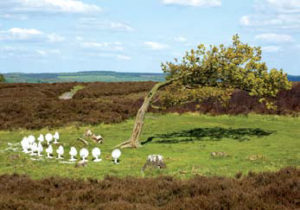
It is a similar practice in Sandarbh, an artist-initiative started by artist Chintan Upadhyay in 2003 in collaboration with a local NGO Banesware Lok Vikash Sanstha (BLVS) at a rural locate Partapur in Banswara, Rajasthan. Sandarbh meaning context, pushes art beyond its pre-determined boundaries where young artists engage with the local paradigms, modes and materials of this distinct land of Vagad region on pretext of site-specific interventions, residencies run through period of a month throughout the year. The local NGO group BLVS’s space functions as Sandarbh’s office during the residencies and workshops and but it doesn’t have any particular place for workshops, creating new environments and opportunities of working within that culture, nature and region. According to Lochan Upadhyay, working as a volunteer at Sandarbh for 8 years, artists too enjoy this opportunity and it also becomes a challenge for the organizers to stimulate environment for such events. Chintan funds Sandarbh’s activities, as it was his initiative but more recently a self sustainable model was attempted for with the effort of BLVS and other artist initiatives.
Art advocates imagine a public that is, by and large, more open and tolerant- a body of citizens dedicated to the collective good, but cognizant to their own rich plurality. Such interactions challenge the hierarchies and produce conditions where cultural relations are mediated especially in face of persistent globalization. The artworks produced here are best apprehended in an environment conducive to the impact of the message. The artist plays an active role in constructing new kinds of relationships with a range of different audience at these spaces. Further, the subject positions that the artist makes available to potential viewers can be quite varied. They insist on the significance of an engaged art practice that is aligned with, but not identical to social or political activism. Indeed true to their nature, alternative space works on a site occupied by an undifferentiated public, assuming that these works enjoy some kind of universalized capacity to communicate across cultural and institutional boundaries.
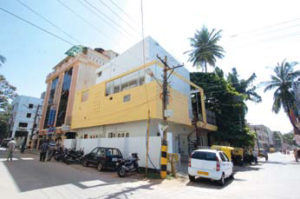
And even at points, if the description evokes images of a virile, aggressive bohemian avant-garde: bare-knuckled artists literally ripping a space for them out of a fabric of the decaying metropolis as a refuge from a banal and indifferent art market, the larger repercussion that cannot be conveniently shunned away is that they also act as a highly effective system for the commercial sector. Selected artists who exhibit here with their experimental activities later join the big leagues. So from an unrecognized space/practice, the artist/work gains entry into a formal/commercial sector asserting the existence of the form as a recognized one.
Endnotes
- The Khoj Book 1997-2007 Contemporary art practice in India, pg. 6, Collins.













